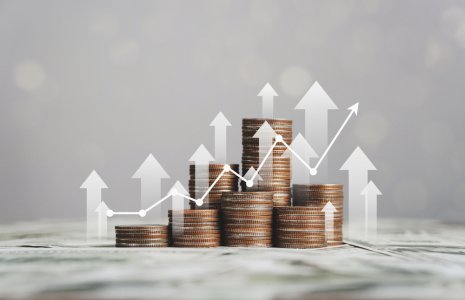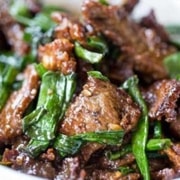ABS reveals new cost-of-living spike details
By
Seia Ibanez
- Replies 20
As we navigate through the ebb and flow of the economy, it's become increasingly clear that the tide is rising on the cost of living, and it's not showing signs of receding anytime soon.
The latest figures are in, and they paint a picture that could have many Australians tightening their belts even further.
Inflation has taken another leap, with the consumer price index (CPI) climbing to 3.5 per cent in the year to March, up from 3.4 per cent in February.
This uptick moves inflation beyond the Reserve Bank of Australia's (RBA) 2 to 3 per cent.
Westpac Bank has revised its forecasts, expecting the RBA to delay any potential rate cuts until 2024.
This revision is a direct response to the persistent rise in inflation, fueled by various factors, including a significant 8.1 per cent surge in petrol prices over the year.
The geopolitical tensions involving Israel, Hamas, and now Iran have sent crude oil prices soaring, with the ripple effect being felt at the fuel pumps where premium unleaded is selling for more than $2.20 a litre in places like Sydney.
But it's not just petrol burning a hole in our pockets. The cost of everyday essentials is also on the rise.
Bread and cereal prices have seen a 7.3 per cent increase, while finance and insurance costs have jumped by 8.2 per cent.
The quarterly measure of headline inflation showed a slight moderation, with the CPI rising by 3.6 per cent, down from 4.1 per cent in December. However, this was still higher than market forecasts, which anticipated a 3.5 per cent increase.
The underlying inflation measures, such as the weighted median and the trimmed mean, revealed annual price increases of 4.4 per cent and 4 per cent, respectively.
The Australian Bureau of Statistics (ABS) determined price increases by analysing a selection of goods.
Using the trimmed mean measure, which excludes the largest price increases and decreases to calculate an average, the annual inflation rate was 4 per cent. This shows that the battle against inflation is still ongoing.
Westpac's Chief Economist, Luci Ellis, who previously served as an Assistant Governor at the Reserve Bank of Australia (RBA), predicted that the first interest rate cut will be delayed until November instead of September.
'Inflation was a bit higher than expected in the March quarter,' she said.
'It is declining, but it has a way to go for the RBA to be confident of returning to the 2 to 3 per cent target range on the desired timetable.
'We expect the board to keep rates on hold in May and have pushed out the date of the first rate cut to November this year, previously September.'
Treasurer Jim Chalmers has acknowledged the issue, conceding that inflation remained too high despite a significant moderation since late 2022.
'It's still too high, people are still under the pump, but we're making progress,' he said.
Moody's Analytics economist Harry Murphy Cruise said that the RBA might delay interest rate cuts because inflation stayed elevated with the commencement of stage three tax cuts in July.
‘Inflation will keep easing from here, but progress will be slow,' he said.
'What's more, a chunk of progress on inflation has come from temporary government rebates that will eventually unwind. ‘
'Those aren't deal breakers for the RBA, but they will delay rate cuts.’
'We had expected the first rate cut to come in September. Increasingly, it's looking like we'll have to wait until November.'
'A stronger Australian first quarter inflation print could give more room to "higher-for-longer" positioning, with the RBA preaching patience on inflation,' Charu Chanana, Saxo’s Head of Foreign Exchange Strategy, said.
The RBA isn't expecting inflation to settle back within its target range until the end of 2025, which could mean a prolonged period of higher interest rates and increased living costs for Australians.
While some goods have seen less dramatic price increases, such as clothing and footwear, up by only 0.3 per cent, the overall trend is one of rising expenses.
Rent, electricity, and even tobacco have all seen significant hikes, with increases of 7.7 per cent, 5.2 per cent, and a whopping 12.4 per cent, respectively.
 What do you think about the findings, members? Let us know in the comments below.
What do you think about the findings, members? Let us know in the comments below.
The latest figures are in, and they paint a picture that could have many Australians tightening their belts even further.
Inflation has taken another leap, with the consumer price index (CPI) climbing to 3.5 per cent in the year to March, up from 3.4 per cent in February.
This uptick moves inflation beyond the Reserve Bank of Australia's (RBA) 2 to 3 per cent.
Westpac Bank has revised its forecasts, expecting the RBA to delay any potential rate cuts until 2024.
This revision is a direct response to the persistent rise in inflation, fueled by various factors, including a significant 8.1 per cent surge in petrol prices over the year.
The geopolitical tensions involving Israel, Hamas, and now Iran have sent crude oil prices soaring, with the ripple effect being felt at the fuel pumps where premium unleaded is selling for more than $2.20 a litre in places like Sydney.
But it's not just petrol burning a hole in our pockets. The cost of everyday essentials is also on the rise.
Bread and cereal prices have seen a 7.3 per cent increase, while finance and insurance costs have jumped by 8.2 per cent.
The quarterly measure of headline inflation showed a slight moderation, with the CPI rising by 3.6 per cent, down from 4.1 per cent in December. However, this was still higher than market forecasts, which anticipated a 3.5 per cent increase.
The underlying inflation measures, such as the weighted median and the trimmed mean, revealed annual price increases of 4.4 per cent and 4 per cent, respectively.
The Australian Bureau of Statistics (ABS) determined price increases by analysing a selection of goods.
Using the trimmed mean measure, which excludes the largest price increases and decreases to calculate an average, the annual inflation rate was 4 per cent. This shows that the battle against inflation is still ongoing.
Westpac's Chief Economist, Luci Ellis, who previously served as an Assistant Governor at the Reserve Bank of Australia (RBA), predicted that the first interest rate cut will be delayed until November instead of September.
'Inflation was a bit higher than expected in the March quarter,' she said.
'It is declining, but it has a way to go for the RBA to be confident of returning to the 2 to 3 per cent target range on the desired timetable.
'We expect the board to keep rates on hold in May and have pushed out the date of the first rate cut to November this year, previously September.'
Treasurer Jim Chalmers has acknowledged the issue, conceding that inflation remained too high despite a significant moderation since late 2022.
'It's still too high, people are still under the pump, but we're making progress,' he said.
Moody's Analytics economist Harry Murphy Cruise said that the RBA might delay interest rate cuts because inflation stayed elevated with the commencement of stage three tax cuts in July.
‘Inflation will keep easing from here, but progress will be slow,' he said.
'What's more, a chunk of progress on inflation has come from temporary government rebates that will eventually unwind. ‘
'Those aren't deal breakers for the RBA, but they will delay rate cuts.’
'We had expected the first rate cut to come in September. Increasingly, it's looking like we'll have to wait until November.'
'A stronger Australian first quarter inflation print could give more room to "higher-for-longer" positioning, with the RBA preaching patience on inflation,' Charu Chanana, Saxo’s Head of Foreign Exchange Strategy, said.
The RBA isn't expecting inflation to settle back within its target range until the end of 2025, which could mean a prolonged period of higher interest rates and increased living costs for Australians.
While some goods have seen less dramatic price increases, such as clothing and footwear, up by only 0.3 per cent, the overall trend is one of rising expenses.
Rent, electricity, and even tobacco have all seen significant hikes, with increases of 7.7 per cent, 5.2 per cent, and a whopping 12.4 per cent, respectively.
Key Takeaways
- Australian inflation has risen to 3.5 per cent for the year to March, up from 3.4 per cent in February, exceeding the Reserve Bank of Australia's target range.
- Significant contributors to the inflation rise include petrol prices surging by 8.1 per cent due to international conflicts and increased costs for essentials such as bread and cereal.
- Westpac Bank has revised its forecast, suggesting that the Reserve Bank may delay interest rate cuts until November due to persistent inflation.
- The Treasurer acknowledged the high cost of living, while analysts suggested that inflation might ease slowly, potentially delaying interest rate cuts and keeping the current rate at a 12-year high.








